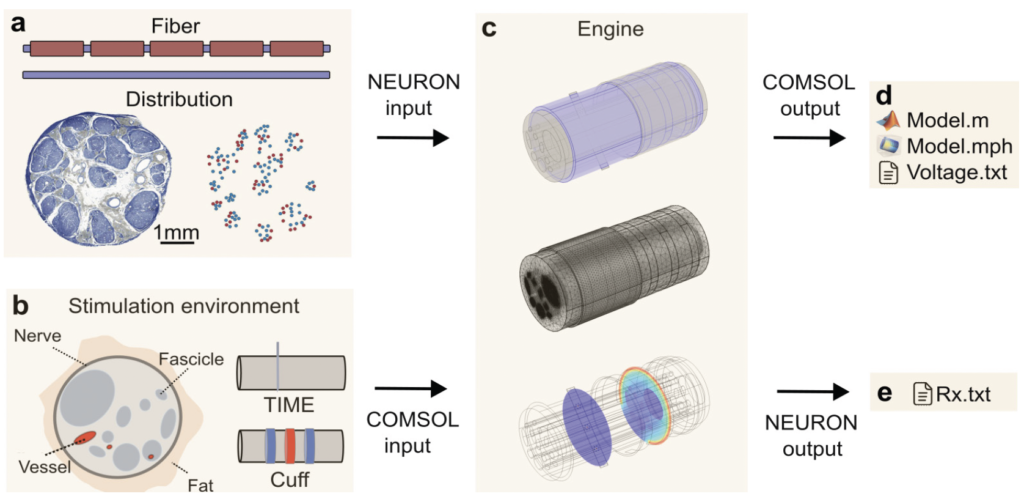Computational neural modelling
Simulations help neuroengineers test ideas before creating real devices. However, many existing tools don’t realistically model the interactions between implants and biological tissues. They often prioritize speed and simplicity over accuracy, overlooking key factors like the structure of tissues (such as fat, scar tissue, and blood vessels) and the body’s immune response to implants.
We’ve developed a simulation toolkit that not only maintains efficiency but also accurately represents these complex biological interactions. This is a crucial step toward designing more effective neural interfaces.

Ultrasonic neural interface
As neuroprosthetics advance, there is a growing need for efficient wireless power delivery, especially for miniature devices implanted deep within tissues. Among the various wireless power strategies, ultrasound stands out as a promising direction. Unlike inductive coupling, ultrasound experiences less attenuation with distance and can support device miniaturisation due to its shorter wavelength. Here, we developed an ultrasonic interface that can reliably power and communicate with miniature implants.

Encapsulation for neural implants
Neural implants need encapsulation to be safe and work long-term. This encapsulation must be airtight (hermetic). For ultrasonic interfaces, it also needs to match the acoustic properties of surrounding tissues to minimize ultrasound reflection between the PZT and tissue.

